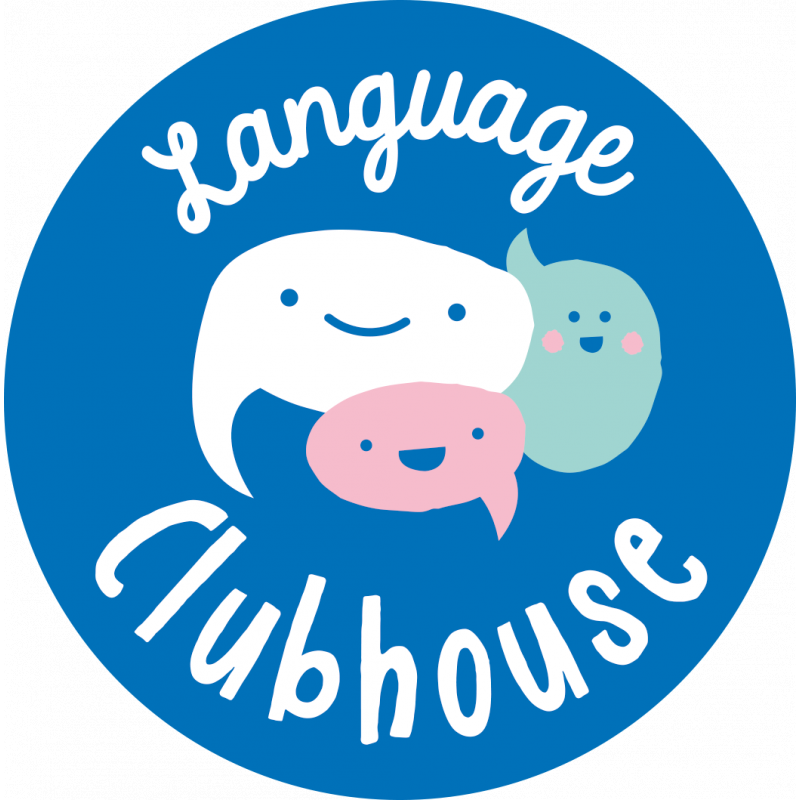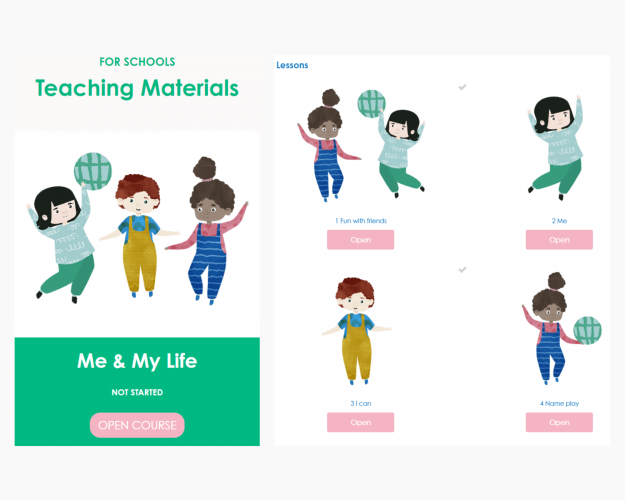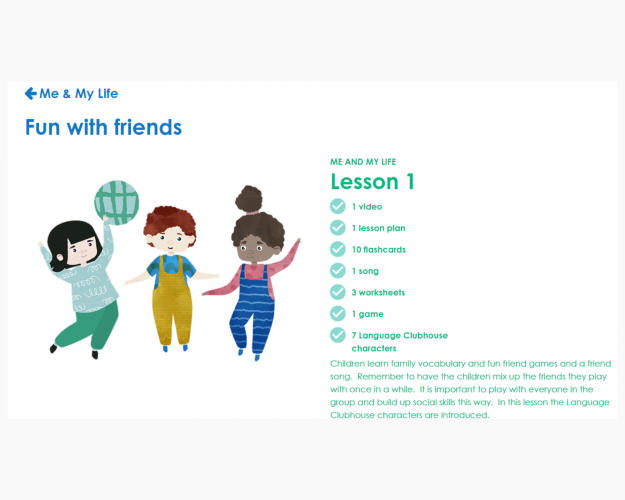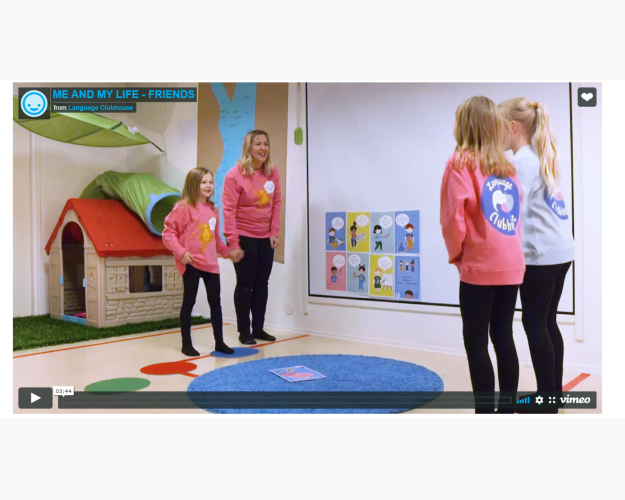Student can understand simple, short instructions given by my teacher, e.g. Stand up, please!
Student can understand the important words in a song or rhyme.
Student can understand the words for colours and shapes.
Student can understand the words for different types of weather.
Student can understand the main words about travelling.
Student can understand the names of some animals and plants.
Student can can understand a few familiar spoken words and phrases, e.g. the teacher’s instructions, a few words and phrases in a song or a rhyme, days of the week, colours or numbers…
Student can understand some words and phrases in songs and simple children’s poems.
Student can recognise shapes and categories.
Student can understand some words in songs and rhymes.
Student can identify familiar words and phrases.
Student can can understand the days of the week.
Student can understand days of the week and months of the year.
Student can understand the names of clothes he/she wears to school and the food that he/she eats in school.
Student can understand the days of the week, months of the year and seasons in a spoken text, e.g. Monday, January, Spring.
Student can understand clock times, days, months and dates.
Student can understand when somebody talks about their family or friends in simple sentences.
Student can understand a range of familiar spoken phrases, e.g. basic phrases concerning myself, my family and school…
When people speak, student can understand common phrases and often used words on the topics he/she knows something about.
Student can understand very short conversations when people speak slowly and clearly.
Student can understand instructions given by the teacher in the classroom, such as ‘You must do this’, ‘Take off your coats.’
Student can understand the teacher’s instructions.
Student can understand when the teacher tells me to do something that I already know.
Student can understand when my friends tell me how to play a game.
Student can understand simple instructions (“Open your book!”, “Come to the board!”, “Stop!”, “Run!”, …)
Student can understand simple instructions given by the teacher during the class (“Stand up”, “Sit down”, “Come in”, “Go out”, “Say”, “Listen”, “Give me the book”, “Take it”, etc.)
Student can understand simple classroom instructions such as “Sit down”, “Wait”, “Listen”.
Student can understand the main point(s) from a short spoken passage, e.g. a short rhyme or song, a telephone message, announcement or weather forecast…
Can recognise words, names and numbers that he/she already knows in simple, short recordings, provided that they are pronounced very slowly and clearly.
Student can understand everyday words and sentences in children’s films, cartoons, tales, advertisements and announcements.
Student can understand some words and phrases he/she hears on TV programmes.
Student can understand numbers and prices.
Student can read and understand a simple, short role-play, e.g. a shopping dialogue.
With the help of pictures student can read the names of countries or different regions in the world, animals and plants, holidays and festivities.
Student can use pictures and posters to understand words about animals and plants.
Student can read the words on a poster or picture about weather.
Student can read and understand names of food and drinks with the help of pictures, e.g. apple, milk.
Student can recognize and read out familiar words from a story.
Student can read and understand familiar words from a song we have sung together.
Student can read the words for the clothes that he/she knows and the food that he/she likes and doesn’t like.
Student can read the words for different colours and shapes.
Student can count to 20.
Student can ask for something.
Student can understand when somebody introduces his/her family or friends to me, e.g. This is my mother.
Student can understand familiar words and phrases (e.g. numbers, days of the week, colours, weather).
Student can greet and respond to a greeting.
Student can write something about oneself (e.g. name, age and where I live).
Student can write some information about his/her family: mother, father, sister, brother, etc
Student can write about which food and drinks he/she likes/dislikes in simple, short sentences using given pictures and words, e.g. I like spaghetti. I don’t like coffee.
Student can write simple, short sentences about his/her work at school using given pictures and words, e.g. I am singing a song.
Student can identify names of shops or places (chemist’s, baker’s, school, post office, football field, …)
Student can understand the words for people who help us.
Student can understand the words for the holidays and festivals during the school year.
Student can understand when he/she is told the time.
Student can read short sentences.
Student can understand simple sentences if they read them slowly and several times.
Student can read and understand simple, short sentences about the holidays, e.g. In the summer holidays my friend was in France.
Student can understand phrases and word combinations with the help of common words and names in very simple short texts.
Student can recognise words for different types of transport on a poster or in a book.
Student can use pictures in a reader or textbook to identify different peoples and parts of the world.
Student can recognise and read out a few familiar words and phrases, e.g. from stories and rhymes, labels on familiar objects, the date, the weather…
Student can read the words for people who help us.
Student can read the words for festivals and seasons.
Student can match words and sentences with pictures.
Student understand simple stories and shorter texts with the help of pictures and drawings.
Student can read and understand simple, short sentences about the weather when he/she sees pictures with it, e.g. The sun is shining today
Student can read and understand simple, short sentences about illnesses when he/she sees pictures, e.g. Peter has the measles.
Student can read rhymes.
Student can understand when somebody writes him/her about how s/he is and what s/he is doing.
Student can read and understand a simple, short description of a person, e.g. My name is Lisa. I am nine years old.
Student can read the time - the hours.
Student can read and understand posters, advertisements, and short announcements I see on the street, in stores, at the bus station, and other places (such as: train station, bus stop, Quiet, No Smoking, Supermarket, etc.).
Student can read school and street signs (“Library”, “Canteen”, “Post Office”, “Chemist’s”).
Student I can read and understand familiar words and phrases I see at school, in shops, in streets and elsewhere.
Student can understand short simple messages on postcards, and in short letters (such as: Happy New Year or Happy Birthday).
Student can work out and act out a simple and short role-play with others, e.g. a telephone conversation.
Student can understand when his/her conversation partner introduces himself when he/she says his/her name, age and where he/she lives.
Student can understand when someone tells me how he/she feels in simple, short sentences, e.g. Today I am fine.
Student can understand when somebody asks me for help using simple, short sentences, e.g. Can you help me, please?
Student can understand when someone speaks about a free-time activity in simple, short sentences, e.g. I like to read.
Student can understand when somebody talks about his/her holidays using simple, short sentences, e.g. In the holidays I was in Italy.
Student can understand simple phrases and sentences concerning my family and my school.
Student understands when somebody talks about their family or friends in simple sentences.
Student can understand questions about oneself.
Student can understand when the teacher tells me to do something that he/she already knows.
Student can understand simple questions about oneself.
Student can understand when people greet him/her, ask him/her how he/she is and says good-bye to him/her. [
Student can understand common words and names of everyday objects that are in his/her everyday life.
Student can understand routine phrases such as “please” and “thank you.”
Student can understand when someone tells me how he/she feels in simple, short sentences, e.g. Today I am fine.
Student can understand when somebody asks him/her for help using simple, short sentences, e.g. Can you help me, please?
Student can ask someone what they like or don’t like.
Student can ask someone if they have brothers or sisters. [
Student can ask and answer simple questions and talk about his/her interests, e.g. taking part in an interview about my area and interests; a survey about pets or favourite foods; talking with a friend about what we like to do and wear…
Student can say hello and goodbye to his/her teachers and classmates.
Student can introduce oneself and other people.
Student can ask and answer simple, short questions about pets, e.g. My hamster’s name is Hugo. What does your guinea pig eat?
Student can introduce oneself, say his/her name, and answer simple questions about oneself if people speak slowly and clearly (e.g. "What’s your name?" "How old are you?" "What grade are you in?", “How many brothers and sisters do you have?” etc.).
Student can greet somebody and say good-bye in simple and short sentences, e.g. Good bye, Mr Miller!
Student can introduce oneself and others in simple, short sentences, e.g. My name is Peter. I live in …
Student can introduce somebody and can use basic greetings and leave taking expressions.
Student can ask somebody about how they are and what they like doing and answer similar questions.
Student can ask how someone is, and say how I am.
Student can talk about how he/she feels and also ask others how they feel in simple, short sentences, e.g. I am tired. How are you today?
Student can recognise simple greetings.
Student can ask someone’s name, and say his/her name.
Student can ask his/her classmates simple, short questions, e.g. What is your favourite colour?
Student can have simple daily conversations on what he/she likes and dislikes.
Student can understand instructions that include colours, shapes or opposites.
Student can ask someone to play a game with him/her, e.g. Will you play catch with me?
Student can name some foods and drinks.
Student can ask for food and drinks and say thank you, e.g. Cake and juice, please!
Student can make simple purchases through pointing to objects or using gestures.
Student ask questions about school activities, for example classroom tasks, homework, holidays.
Student can answer simple questions about the weather.
Student can ask about the weather and talk about it, e.g. What is the weather like today?
Student can ask and answer simple questions, such as “What is your name?” “How old are you?”, “Where do you live?”, “What do you like?”, etc..
Student can manage very short, isolated, rehearsed utterances using gesture and signalled requests for help when necessary.
Student can write a list (e.g. a shopping list).
Student can understand the words for the main places in the town or village where he/she lives.
Has a basic vocabulary repertoire of isolated words and phrases related to particular concrete situations.
Shows only limited control of a few simple grammatical structures and sentence patterns in a learnt repertoire.
Pronunciation of a very limited repertoire of learnt words and phrases can be understood with some effort by native speakers used to dealing with speakers of his/her language group.
Student can read and understand simple and short sentences underneath pictures.
Student can understand when people ask him/her a simple question or ask for something when they speak slowly and clearly.
Student can ask and answer questions about a person, family, and interests.






User reviews for Language Clubhouse
You need to log in to post a review.